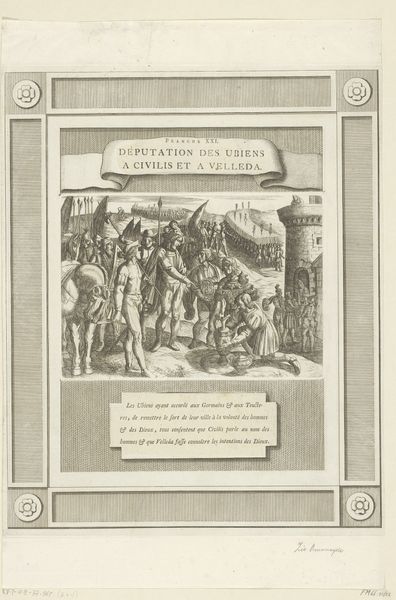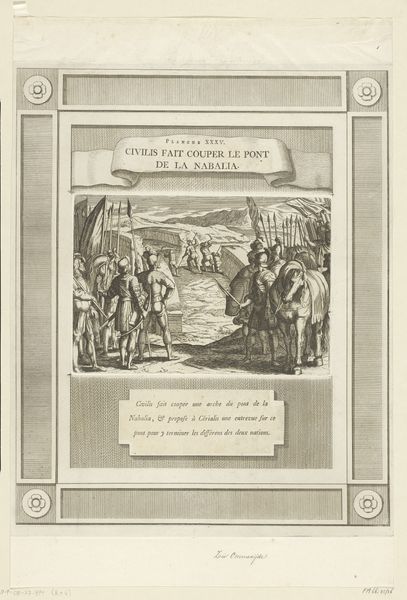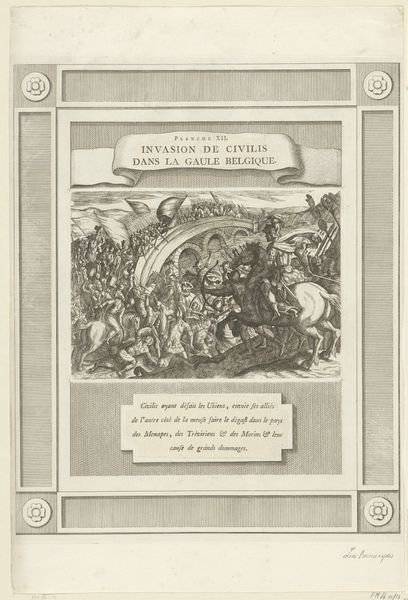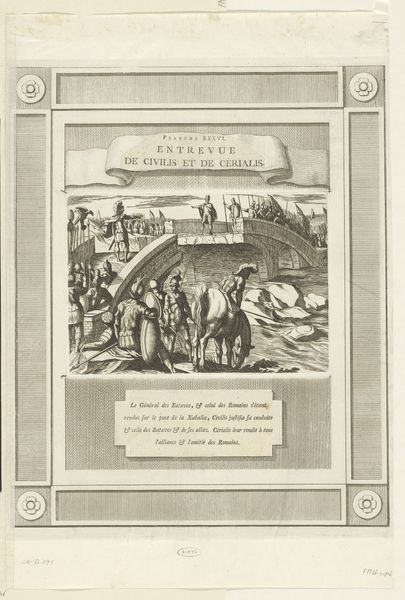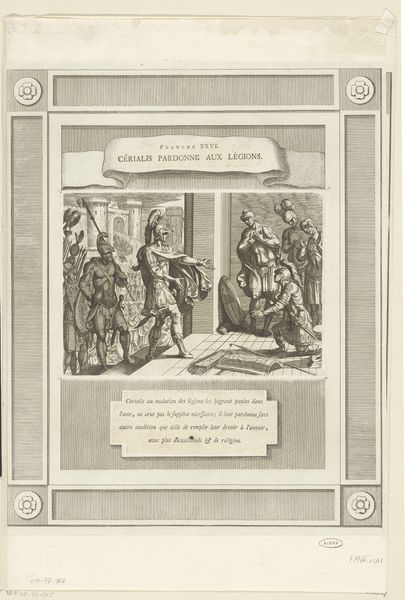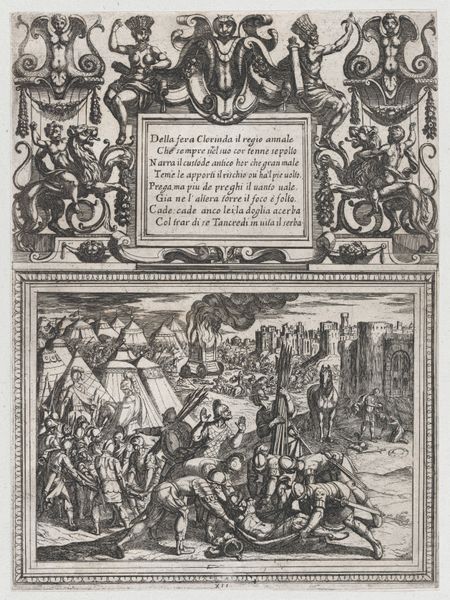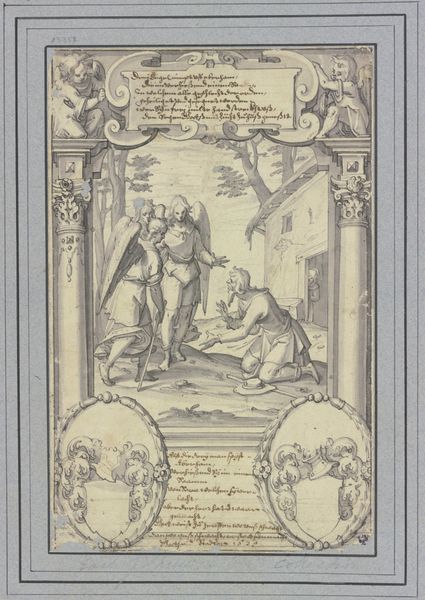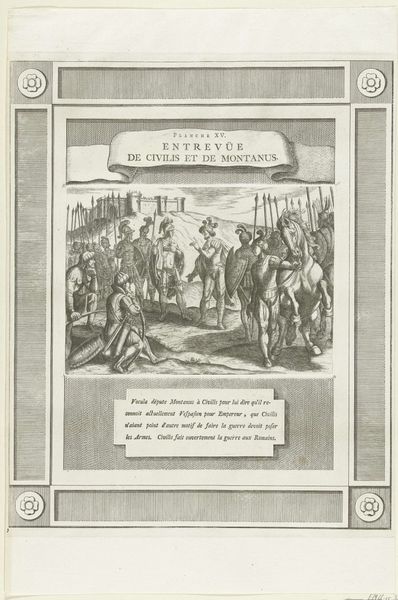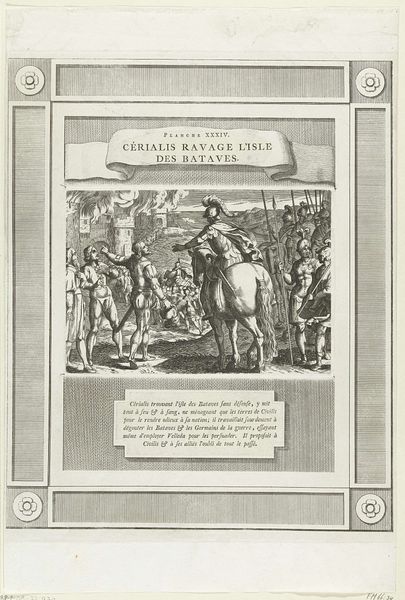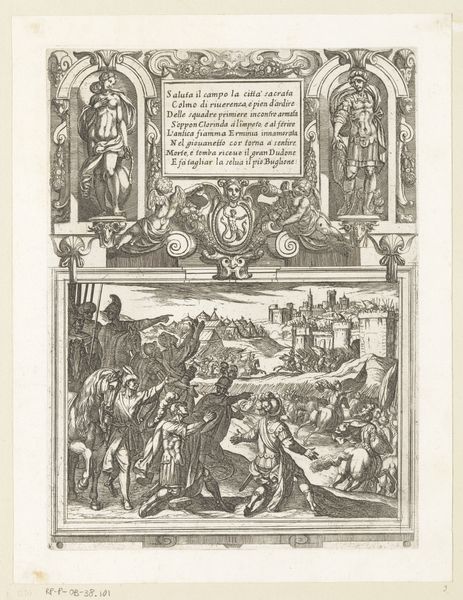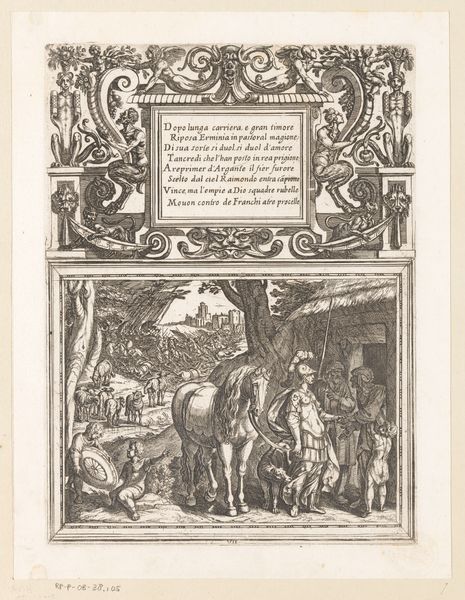
Dimensions: height 140 mm, width 202 mm, height 370 mm, width 300 mm
Copyright: Rijks Museum: Open Domain
Curator: Immediately, I'm struck by this engraving's density – so many figures meticulously rendered within such a small space. It's an impressive feat of technique, wouldn't you agree? Editor: Absolutely, though it makes me feel a bit claustrophobic. Like a stage crowded with actors waiting for their cue. There's almost too much detail to fully absorb. What story is this microscopic drama trying to tell? Curator: The print, entitled "Civilis laat zijn haren knippen, 69-70" – which roughly translates to "Civilis having his hair cut, 69-70" – dates from around 1768-1770 and resides here at the Rijksmuseum. Editor: Well, the title certainly clears up the hair situation! So, this is clearly a momentous haircut. Curator: Indeed. Civilis was a Batavian leader during the revolt against Roman rule in the Netherlands. He vowed not to cut his hair or beard until the Romans were defeated, so this act of cutting represents the fulfillment of that vow. It becomes a visual symbol of freedom. The text included with the work restates this account from Tacitus. Editor: You can really see it in the stance of the figures present as well. What is intriguing is how Civilis seated off to the side in this scene; almost weary while this ceremony goes on around him. I see symbols of the liberation represented through military achievement in other smaller features like broken staffs or swords on the ground too! It must have been incredibly symbolic. Curator: Absolutely. Every element, from the posture of Civilis to the weapons on the ground, contributes to the overall message of liberation. The image freezes this key symbolic moment, offering a specific interpretation, which adds a fascinating layer for the audience viewing. Editor: Right. Thanks to your illumination and explanation it opens up an avenue of appreciating narrative and figuration in this particular style. Curator: Yes, it makes me think about what kinds of visual vows or expressions of identity we employ today and how complex this image has become.
Comments
No comments
Be the first to comment and join the conversation on the ultimate creative platform.
